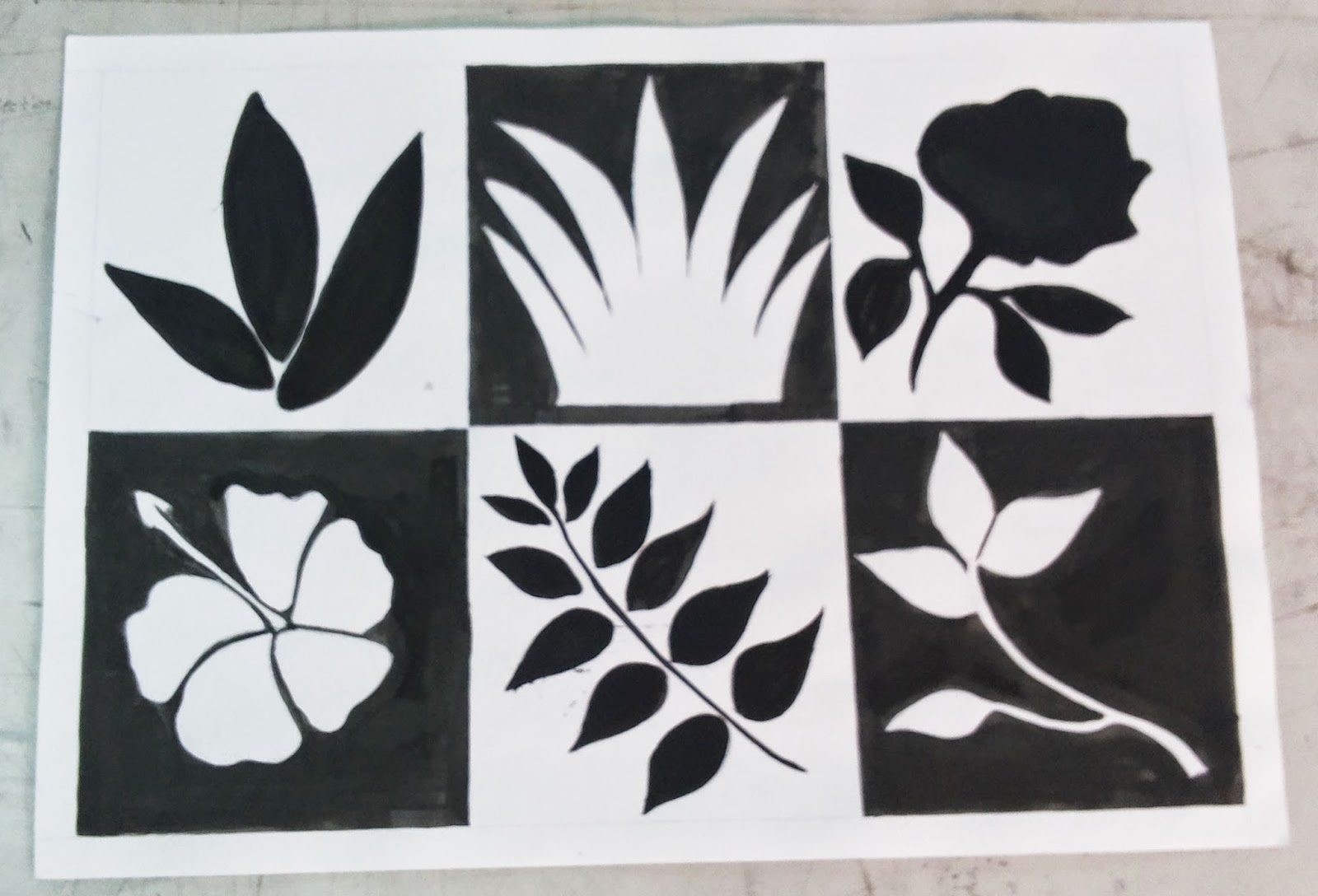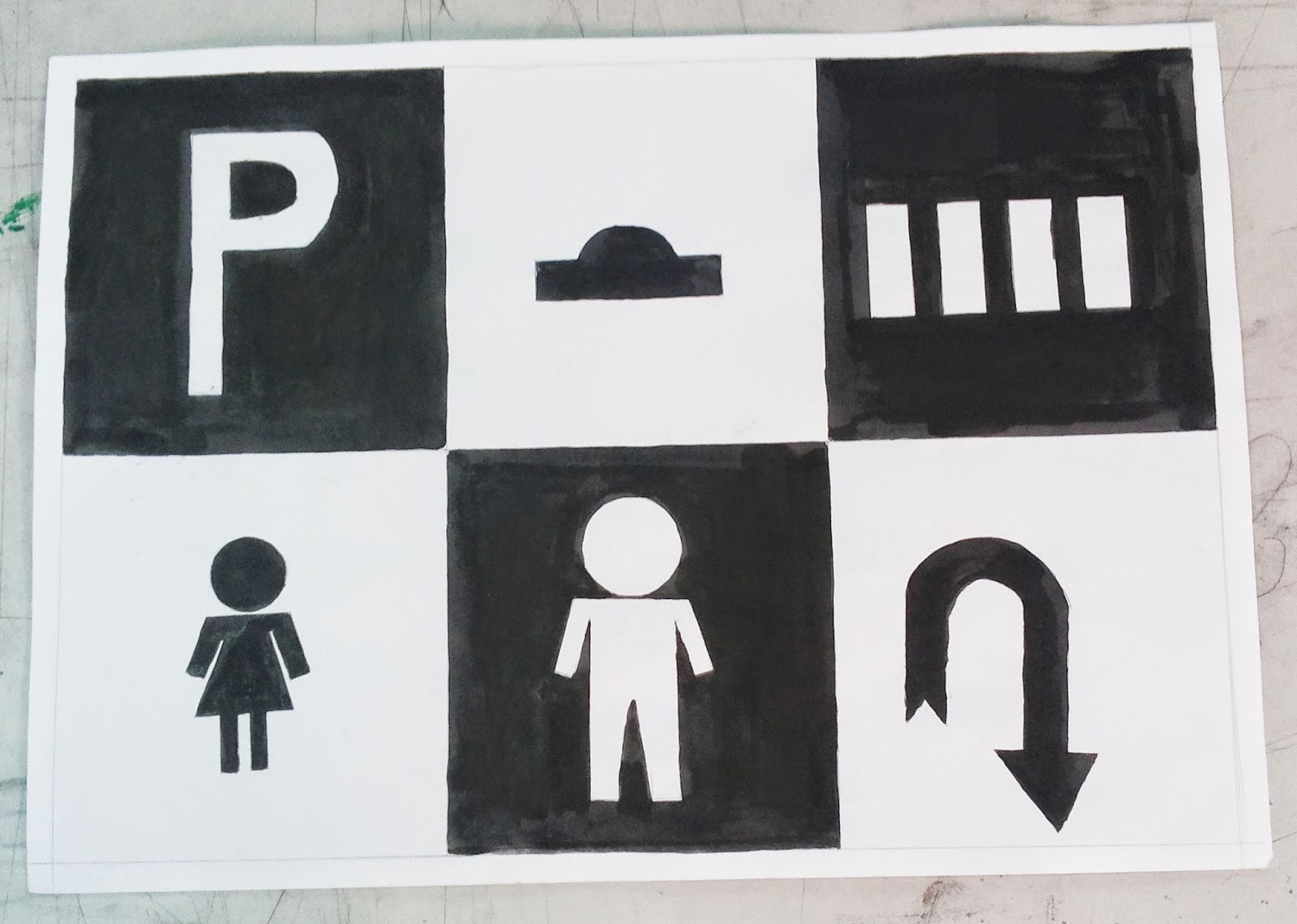THE ELEMENTS OF DESIGN
The elements of design can be thought of as the things that make up a painting, drawing, design etc. Good or bad - all paintings will contain most of if not all, there are 7 elements of design.
1.Point
The smallest element of graphic design. Depending on a distance points of various sizes can be perceived. Designing with dots or points can create a wide variety of visual effects. There are various associations that can be made with positioning a single dot in different areas of a page.
a) sense of line
b) Irregular structure
c) Sense of movement
d) Overlapping point
e) point of direction
f) different type of direction
g) Illusion of depth
INDIVIDUAL POINT
2. Line
A line is a form with width and length, but no depth. Artists use lines to create edges, the outlines of objects. A line is created by the movement of the artist's pen.The direction of a line can convey mood.“Every linear expression derives from a point set in motion” – Andrian Frutiger.
A) Horizontal Line
This line makes passive, heavy, calm and quiet
B) Vertical Line
vertical lines suggest more of a potential for movement.
Diagonal line can be read as ascending (bottom left to top right) or descending (top left to bottom right)
D) Curved line
Lines can be bent, curved, connected and intersected, etc. thus bringing various suggestions of motion and creating different dynamics for a design.
INDIVIDUAL LINE
A shape is defined as an area that stands out from the space next to or around it due to a defined or implied boundary, or because of differences of value, color, or texture . A positive shape in a painting automatically creates a negative shape.
FINAL OVERLAPPING
4) Texture
Meaning the way a surface feels or is perceived to feel. Texture can be added to attract or repel interest to an element, depending on the pleasantness of the texture.
texture can be physical (tactile) or visual
a) physical texture - can feel with your hand. The build up of paint. slipperiness of soft pastel, layering of collage.
b) visual texture - the illusion of physical texture, created with the material you use. Paint can be manipulated to give the impression of texture, while the paper surface remains smooth and flat.
COLLAGE
5) Value/tonal contrast
value is the degree of light and dark in a design. It is the contrast between black and white and all the tones. Value can be used with color as well as black and white.
The greater the difference the more attention the area attracts. Its the one of the most powerful tool to define the centre or interest in a painting. Having the less tonal contrast in the foreground allows the object to dominate and so not confuse the viewer. Simple abstract marks such as this foreground play an important part in the composition of the painting . Their job is to lead the eye bags to the centre of interest. They must have enough strength to do this while not drawing attention away from the centre of interest. Delicate tonal adjustment is often necessary to get the balance right.
types of value color:-
FINAL VALUE
6) Form
Form is any three-dimensional object. Form can be measured, from top to bottom (height), side to side (width) and from back to front (depth).
7) Wire sculpture
A wire sculpture is a figure, piece of jewelry, or other decorative item that has been formed and shaped out of wire.
proses :-
THE PRINCIPLE OF DESIGN
The Principles of design can be thought of as what we do to the elements of design. How we apply the Principles of design determines how successful we are in creating a work of art. There are 5 principal of design.
1) Balance
Balance is the concept of visual equilibrium, and relates to our physical sense of balance. It is a reconciliation of opposing forces in a composition that results in visual stability. Most successful compositions achieve balance in one of two ways: symmetrically or asymmetrically. Balance in a three dimensional object is easy to understand; if balance isn't achieved, the object tips over. To understand balance in a two dimensional composition, we must use our imaginations to carry this three dimensional analogy forward to the flat surface.
2) Proportion
Proportion refers to the relative size and scale of the various elements in a design. The issue is the relationship between objects, or parts, of a whole. This means that it is necessary to discuss proportion in terms of the context or standard used to determine proportions.
Our most universal standard of measurement is the human body; that is, our experience of living in our own bodies. We judge the appropriateness of size of objects by that measure. For example, a sofa in the form of a hand is startling because of the distortion of expected proportion, and becomes the center of attention in the room.
3) Rhythm
Rhythm is the repetition of visual movement of the elements-colors, shapes, lines, values, forms, spaces, and textures. Variety is essential to keep rhythms exciting and active, and to avoid monotony. Movement and rhythm work together to create the visual equivalent of a musical beat.
4) Emphasis
Emphasis is also referred to as point of focus, or interruption. It marks the locations in a composition which most strongly draw the viewers attention. Usually there is a primary, or main, point of emphasis, with perhaps secondary emphases in other parts of the composition. The emphasis is usually an interruption in the fundamental pattern or movement of the viewers eye through the composition, or a break in the rhythm.
5) Unity
Unity is the underlying principle that summarizes all of the principles and elements of design. It refers to the coherence of the whole, the sense that all of the parts are working together to achieve a common result; a harmony of all the parts.



















































































No comments:
Post a Comment